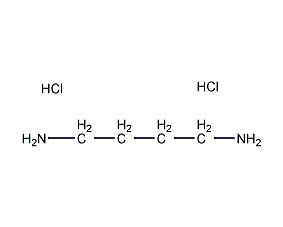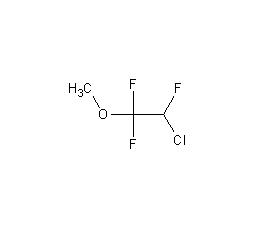1,1,2,2-Tetrafluoroethyl methyl ether


Structural formula
| Business number | 04SL |
|---|---|
| Molecular formula | C3H4OF4 |
| Molecular weight | 132.06 |
| label |
1,1,2,2-tetrafluoroethyl methyl ether, 1,1,2,2-Tetrafluoroethyl methyl ether, 1,1,2,2-TETRAFLUOROETHYL METHYL ETHER, 1,1,2,2-TETRAFLUORO-1-METHOXYETHANE, METHYL 1,1,2,2-TETRAFLUOROETHYL ETHER, Methyl 1,1,2,2-tetrafluoroethyl ether 98%, Methyl1,1,2,2-tetrafluoroethylether98%, 1,1,2,2-Tetrafluoro-3-oxabutane |
Numbering system
CAS number:425-88-7
MDL number:MFCD00042106
EINECS number:207-039-4
RTECS number:None
BRN number:1737755
PubChem number:24856874
Physical property data
一 , physical property data
Traits :Not available
Density (g/mL,25/4℃): 1.294
Relative Vapor density (g/mL, air=1):Not available
Melting point (ºC): -107
Boiling point (ºC, normal pressure): 36-37
Boiling point (ºC, 5.2kPa): Not available
Refraction Rate: 1.284
Flash Point (ºC): -20
Optical rotation (º): Not available
Spontaneous combustion Point or ignition temperature (ºC): Not available
Steam Pressure (kPa, 25ºC): Not available
saturated Vapor pressure (kPa, 60ºC): Not available
Burn Heat (KJ/mol):Not available
Critical Temperature (ºC): Not available
Critical Pressure (KPa): Not available
oil and water Log value of the (octanol/water) partition coefficient:Not available
Explosion Upper limit (%, V/V): Not available
Explosion Lower limit (%, V/V): Not available
Dissolve Properties: Not available
Toxicological data
2. Toxicological data:
Acute Toxicity:Not available .
Ecological data
Three , Ecological data:
1 ,Other harmful effects: This substance may be harmful to the environment, and special treatment should be given to water bodies. Notice.
Molecular structure data
None yet
Compute chemical data
1. Reference value for hydrophobic parameter calculation (XlogP): 1.7
2. Number of hydrogen bond donors: 0
3. Number of hydrogen bond acceptors: 5
4. Number of rotatable chemical bonds: 2
5. Number of tautomers: none
6. Topological molecule polar surface area 9.2
7. Number of heavy atoms: 8
8. Surface charge: 0
9. Complexity: 71.7
10. Number of isotope atoms: 0
11. Determine the number of atomic stereocenters: 0
12. Uncertain number of atomic stereocenters: 0
13. Determine the number of chemical bond stereocenters: 0
14. Number of uncertain chemical bond stereocenters: 0
15. Number of covalent bond units: 1
Properties and stability
None yet
Storage method
None yet
Synthesis method
None yet
Purpose
None yet








